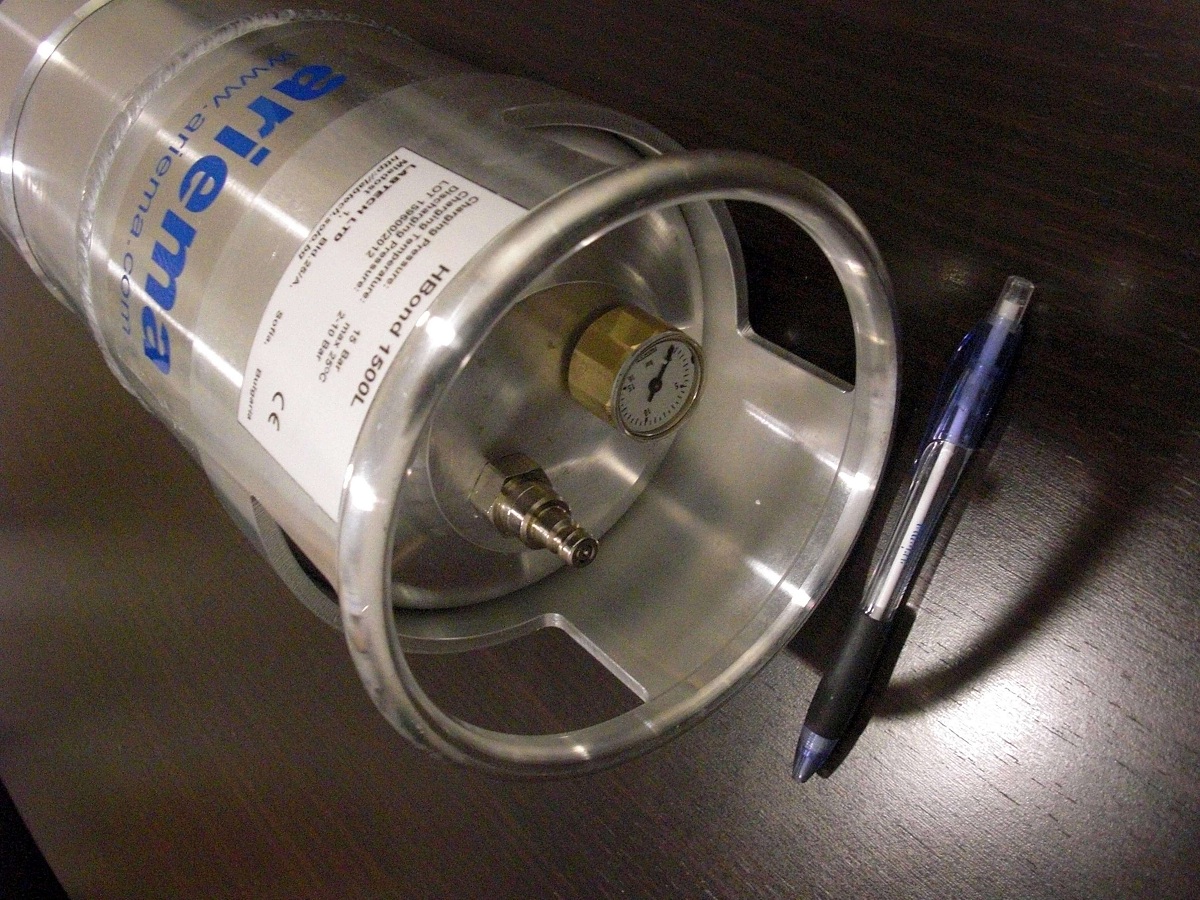
The simplest abundant element in the universe is hydrogen. It can be found in the form of gas in both stars and planets and is also part of various chemical and organic compounds such as water. The liquid hydrogen it may have some interesting applications in different industrial sectors.
Therefore, we are going to dedicate this article to tell you everything you need to know about liquid hydrogen, its characteristics and how it is obtained.
Hydrogen abundance

Hydrogen represents more than 70% of the visible matter in the universe, which makes it the most abundant item. It can be found in the centers of young stars, in the atmospheres of large gaseous planets (such as Jupiter and Venus), as traces on the earth's surface, and as part of thousands of organic and inorganic compounds in nature. As a result, many biological processes rule it out.
There are several isotopes of hydrogen (atoms of the same chemical element, but with different numbers of neutrons):
- Protium (1H). Made up of protons, there are no neutrons in the nucleus. It is the most common version of hydrogen.
- Deuterium (2H). It is heavier than ordinary hydrogen, and its nucleus has one neutron and one proton.
- Tritium (3H). It has two neutrons in the nucleus next to the proton, which makes it heavier.
Key features

We can define it according to the main characteristics of liquid hydrogen:
- The boiling point is low, which can cause frostbite or hypothermia. It can even cause breathing difficulties and suffocation if inhaled.
- Due to the temperature of liquid hydrogen, it can form ice when it comes in contact with moisture in the air, which can block the valves and openings of your storage tanks.
- It continuously evaporates and produces hydrogen, which must be purged and restricted safely to prevent it from mixing with condensed air in the atmosphere, igniting and detonating.
- The high density of saturated vapor can cause the formed cloud to flow horizontally or descend if liquid hydrogen escapes.
It is worth noting that there are several hydrogen production processes that use various raw materials and energy. Based on these factors, we can say that in a certain proportion 100% renewable processes are produced, 100% fossil or mixed. In addition, they can be carried out in central facilities and small units close to the point of use. Therefore, energy can be obtained even in the most remote areas.
How Liquid Hydrogen Is Stored

Making liquid hydrogen economically profitable and achieving its generalized use goes through the adequate storage of hydrogen in accordance with the existing needs for its subsequent transport and distribution from the point of production to the point of consumption.
It should be noted that the systems and conditions in which hydrogen must be stored will depend on the end use. In this way we can distinguish:
- Stationary hydrogen storage system, suitable for industrial and domestic or distributed power generation applications. In this case, there are almost no restrictions in terms of occupied area, weight, volume or use of auxiliary systems.
- Furthermore, the hydrogen storage systems for automobiles they provide a minimum to ensure that vehicles have a range similar to traditional automobiles. In addition, there are operational and dynamic hydrogen supply requirements, which can be adjusted in combination with fuel cells in all types of vehicles.
It should be noted that the transport sector is one of the most important sectors in world energy consumption, especially in developed countries. This has led the automotive industry to become one of the main driving forces for all the advancements in fuel cells, hydrogen and their related storage technologies.
Likewise, when talking about the different forms of storage of this gas, it is necessary to point out the need to maximize its safety, since it is highly flammable, non-toxic, colorless, tasteless and tasteless. In this sense, the list of storage systems includes possibilities in the research stage, such as carbon (active, graphite, molecular carbon beds, nanofibers, fullerenes ...), compounds (NH3), glass microspheres and zeolites.
On the other hand, low temperature storage in liquid form and low temperature storage in pressurized gas or metal hydride have proven to be reliable and can be used safely.
Uses and applications of liquid hydrogen
Due to the technology and different studies that exist on liquid hydrogen, it can be applied in different industrial fields. It must always be taken into account that it is used as a clean and efficient source of energy that does not pollute the environment. Among the most interesting applications are for the energy industry, transport, food industry, aerospace industry and the refinery. We are going to go into more detail about the uses and applications of liquid hydrogen.
Its high efficiency makes it an excellent industrial cooling gas, especially due to its excellent heat transfer performance. The use of hydrogen as an alternative fuel guarantees the vehicle's autonomy, while reducing polluting emissions, thus contributing to the protection of the environment.
The use of this gas aims to improve the quality and safety of food through the development of innovative technologies. It is an efficient fuel for propelling rockets and is also a source of energy for sustaining life and computer systems in the space environment. It is the industry staple for converting heavy crude into refined fuel.
The use of hydrogen as a fuel has several positive effects on the environment. We highlight the most important:
- It is a clean energy, leaving only water vapor as a residue. Therefore, it is more environmentally friendly than fossil fuels.
- It is inexhaustible.
- It can be applied to a wide range of activities, from industry to transportation or households.
- Allow large-scale storage and transportation.
- It is more efficient than electricity. For example, a hydrogen fuel car is fully charged in 5 minutes and has the same range as a combustion car.
All these advantages make hydrogen an efficient, clean and safe source of energy, which must be considered in many industrial fields.
I hope that with this information you can learn more about liquid hydrogen.